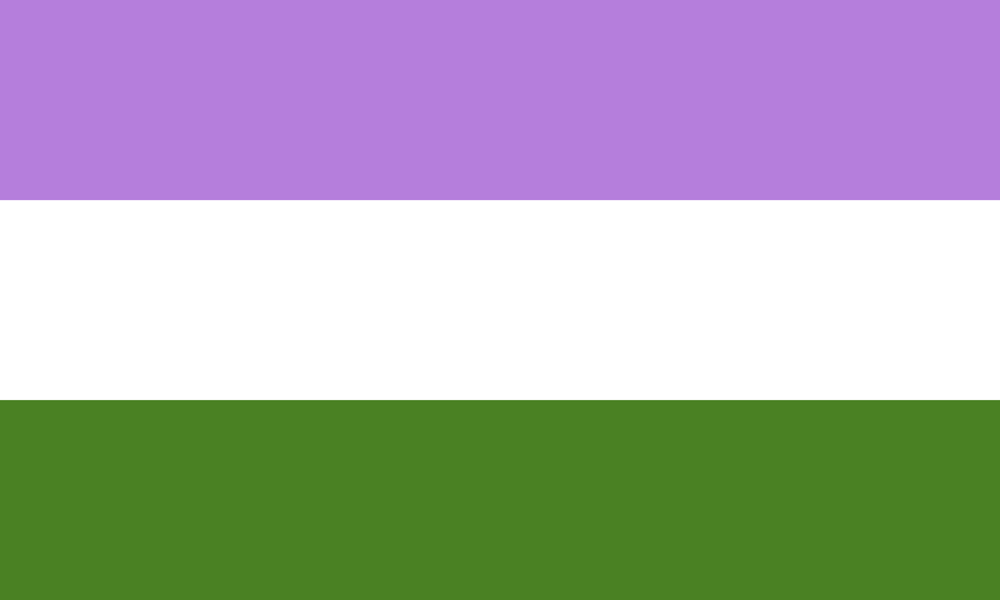
Nonbinary is an identity in its own right, and also a category that includes many more specific genders which are also not male and not female.
As we’ve said elsewhere, gender is a set of subjective experiences, not a set of body parts. In the most general sense, not wanting to be a man or a woman is what we mean if we describe ourself as nonbinary. As with binary transgender people, for some their body is the most important part of all this. For some it’s the way they present themselves to the world through clothing, cosmetics and types of behaviour that our society tends to consider gendered. For some, it’s more about the way the people around them read their gender and behave towards them because of it.
Most nonbinary people (‘enbies’) also see themselves as transgender, because their gender isn’t the same as the one they were assigned at birth. Pursuing medical treatment is less common. This is partly because of the number of enbies who don’t feel enough dysphoria about their bodies to want to transition medically, and partly because gender clinics have been slow to accept and learn how best to help them.
It’s especially common for enbies to use a pronoun other than he or she – because to them, being called either of those words is being misgendered in the same way it would be to call a man ‘she’. They/them is currently the most popular pronoun among nonbinary people, and attempts to get a new non-gendered personal pronoun generally accepted into the English language haven’t succeeded so far.
This pride flag was designed by Kye Rowan in 2014 so that nonbinary could have its own flag, separate from the existing genderqueer one (below). Its colours represent:
- Yellow: outside the gender binary
- White: people who identify with more than one gender
- Purple: a combination of male and female
- Black: agender
For more about nonbinary and related genders, see our video.
Genderqueer

Genderqueer is a much older word, dating back to the 1980s and 90s, and is also primarily an umbrella term meant to include everyone who isn’t male or female. But it’s also about claiming the word ‘queer’ for talking about gender – not about orientation as it was originally used. About freedom to present our gender in our own creative and complex ways. You don’t even have to be nonbinary to ‘qualify’ – you can be a woman or a man and queer your gender and how it looks, in any way that works for you.
The flag was designed by Marilyn Roxie in 2011. Coincidentally the colour stripes are similar to those of a Votes for Women flag created by the suffragettes about a century ago. In the Genderqueer flag they represent:
- Lavender: a mixture of blue and pink to represent androgyny and reclaim terms such as ‘lavender menace’
- White: gender-neutral, agender
- Green (the complementary colour to the lavender): nonbinary
Agender

Agender is the most specific identity on this page, but even it is used by different people to mean different things. Being gender-neutral. Having no sense of wanting to be male or female or anything else – being just a person. Or, not being able to pin down what your gender is.
More about the agender experience from a member of the Congleton Pride team.
This flag was created by Salem Fontana in 2014 with the following colour scheme:
- Black and white: absence of gender
- Grey: semi-genderless
- Green (as in the genderqueer flag, the complementary of a mixture of pink and blue): nonbinary
Events:
- Agender Pride Day: 19 May
- International Nonbinary People’s Day: 14 July
- International Pronouns Day: 18 October